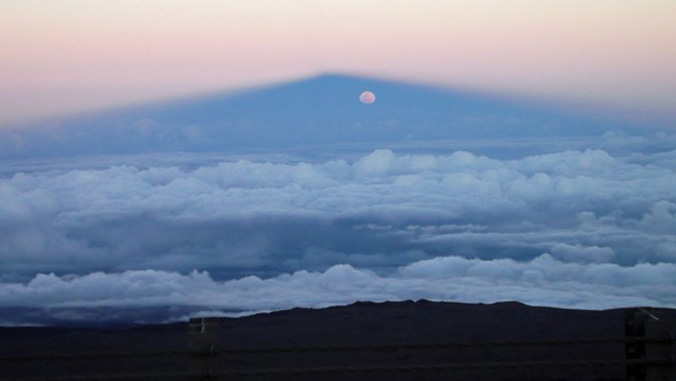
Editor’s update, June 19, 2020: The UH Board of Regents deferred action on the measure at its May 21 meeting. The proposed plan for unification and restructuring of the internal management and stewardship of Maunakea is expected to go to the board for a vote in 2020, possibly as early as the August 20 full board meeting.
A plan to restructure the internal management of University of Hawaiʻi-managed lands on Maunakea was presented to the UH Board of Regents (BOR) on April 16. The plan covers all operating and advisory units associated with Maunakea and will make operations and management more efficient, effective and transparent.
The restructuring plan is one of 11 action items required by the November 2019 BOR resolution directing UH leadership to strengthen its stewardship of Maunakea and is responsive to a recent fiscal review conducted by the UH Office of Independent Audit.
Under the new structure, the lead organization will be the Center for Maunakea Stewardship, reporting directly to the UH Hilo chancellor. The center will be accountable and responsible for all strategic implementation, planning, permitting, compliance oversight, outreach and research and academic coordination.
This internal restructuring is intended to optimize existing resources, competencies and relationships by establishing clear reporting, collaboration and advisory structures. It would bring together the Office of Maunakea Management and Maunakea Support Services (MKSS) while clarifying collaborative roles for the Institute for Astronomy and ʻImiloa Astronomy Center. The roles of the major community advisory groups—Maunakea Management Board, the Kahu Kū Mauna Native Hawaiian advisory council and the Environmental Council—would be strengthened to provide for engagement in strategy and policy matters. The role of the MKSS Oversight Committee (currently consisting of representatives of the various Maunakea Observatories) would also be formally articulated.
“This proposed management structure will improve transparency and lines of accountability, and clarify UH’s oversight and stewardship roles in the broader Maunakea community and through the eyes of key stakeholders,” said Greg Chun, UH executive director of Maunakea stewardship. “It will optimize existing resources, competencies and relationships; better reflect stakeholder representation and maintain governance continuity, which is important for discussions surrounding the future of astronomy on Maunakea.”
The plan was informed by input from the Maunakea Management Board, Kahu Kū Mauna, the Maunakea Observatories, state and private sector land owners/managers and other Hawaiʻi Island community stakeholders, as would be its implementation. Following the discussion at its April meeting, the Board of Regents proposed to formally consider approving the restructuring plan at its May meeting.
What might a new Maunakea governance structure look like?
Another action item called for by the BOR in its 2019 resolution was for the administration to consider and analyze alternative governance structures for Maunakea that the state may choose to advance in the future. Chun presented to the BOR for discussion four models that have been developed with broad input from UH and non-UH stakeholders, and discussed in multiple venues. The four alternatives presented include:
- Creating a new Maunakea Stewardship Authority attached to a state agency, which would hold the master lease and be responsible for all aspects of managing and stewarding the mountain and astronomy support;
- Eliminating the master lease and having Board of Land and Natural Resources (BLNR) and Department of Land and Natural Resources directly responsible for all aspects of managing and stewarding the mountain and astronomy support;
- Issuing a new master lease to a new third party selected by BLNR through some process to be determined; and
- Establishing a collaborative stewardship model for Maunakea involving all stakeholders in which UH would hold a master lease only for what is referred to as the astronomy precinct and Hale Pōhaku.
Chun highlighted other examples in Hawaiʻi on which these models were patterned and shared the considerations that might drive a decision by state policymakers as to the preferred model moving forward. These alternatives will be further explored in partnership with DLNR in consultation with the community.
“It is important that the regents and our policymakers have a full understanding of possible alternatives when it comes to the management of the mauna, to chart the best path forward, not just for UH and astronomy, but for the state,” said Chun.

